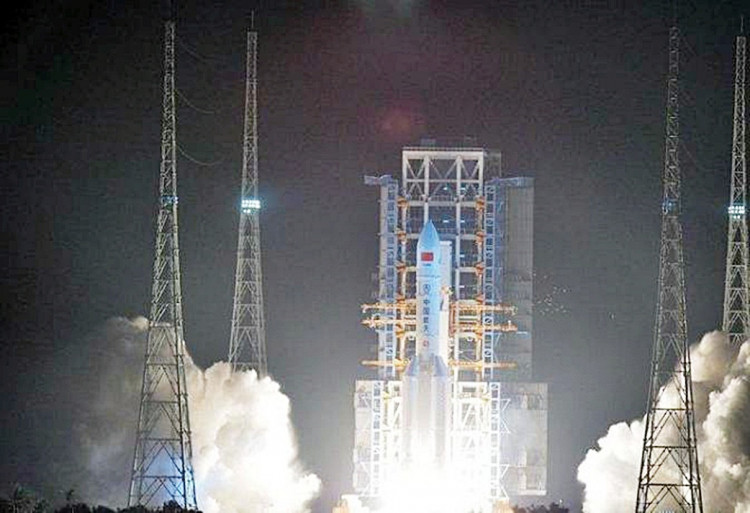China intends to use a reusable first stage in its next-generation crew launch vehicle for missions to the space station and the moon. The new rocket would provide a reusable launch option for astronauts or cargo to China's new Tiangong space station, while a larger version would enable China to send crews to the moon and deep space.
According to the China Aerospace Science and Technology Corporation (CASC), the nation's main space contractor, it will also be capable of hauling a new, larger spacecraft than the Shenzhou currently used by the China National Space Administration for crewed missions.
The rocket is currently known as the "New-Generation Manned Launch Vehicle." After completing its launch duty, the first stage will restart its engines to aid it decelerate, utilizing grid fins for guiding, similar to SpaceX's pioneering Falcon 9 rockets.
According to Wang Xiaojun, president of China Academy of Launch Vehicle Technology (CALT), the landing phase will feature "tethered landing devices." Instead of landing legs, the descending rocket stage will be equipped with hooks that will be caught by tightwires.
China currently launches crewed missions on the disposable Long March 2F rocket, which also employs hazardous hypergolic fuel, making it dangerous and expensive to handle.
The new rocket will be powered by engines designed for China's newer Long March 5, 6, 7, and 8 rockets, which will use refined RP-1 kerosene fuel and liquid oxygen. It will be available in two versions: a two-stage version for humans to travel to China's space station, and a three-stage version with two side boosters for deep space missions.
When the first stage is recovered, the smaller version will be capable of launching roughly 30,800 pounds (14,000 kilograms) to low Earth orbit, allowing it to carry a next-generation crew spacecraft, which had an uncrewed test flight in 2021. When the first stage is exhausted, it can carry (18,000 kilograms).
The larger version will have the capability of launching 59,500 pounds (27,000 kilograms) into lunar transfer orbit. That means a larger, heavier version of the new crew spacecraft optimized for lunar and deep space missions could be launched.
According to SpaceNews, CALT's veteran Long March rocket designer Long Lehao stated in June 2021 that two launches of the rocket may be employed for a short-term crewed lunar landing mission.
China does not yet have a reusable rocket, meaning it has a number of technological breakthroughs to make first.
CASC did not reveal when the rocket will be ready, but China's recently released space white paper outlined key tasks for the next five years (2021-2025), which included the first launch of the new crew launch vehicle.




